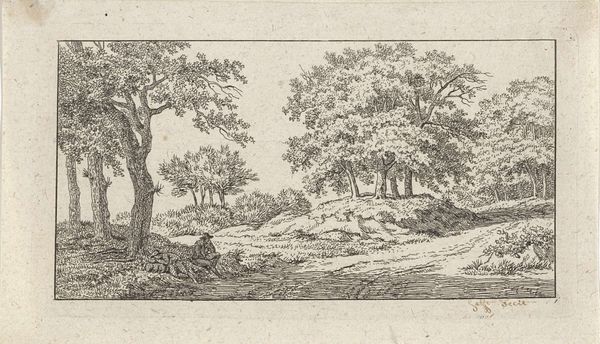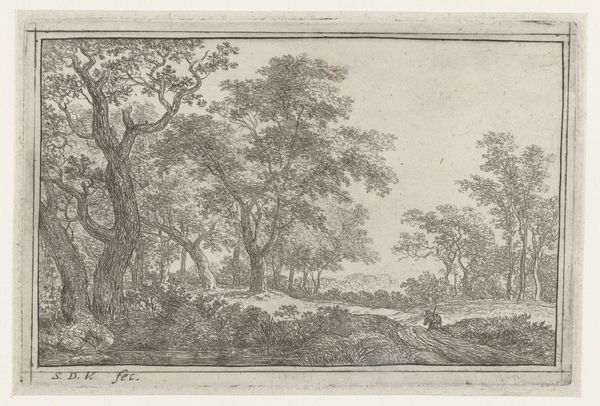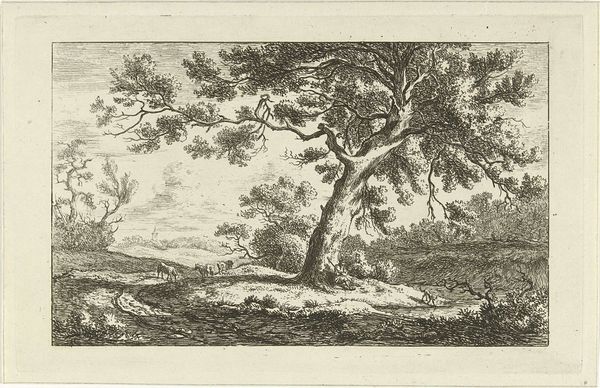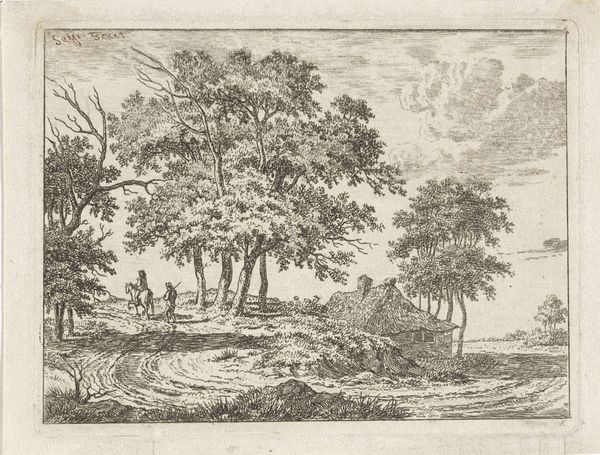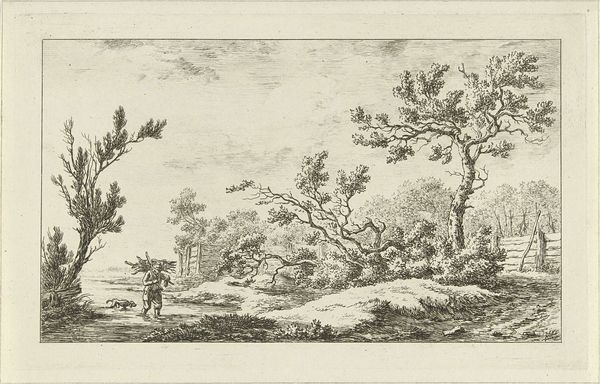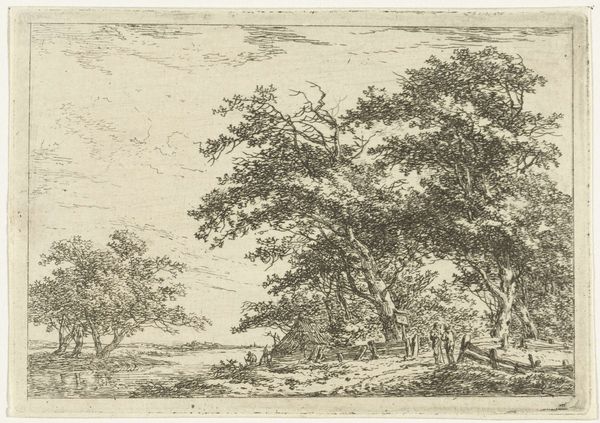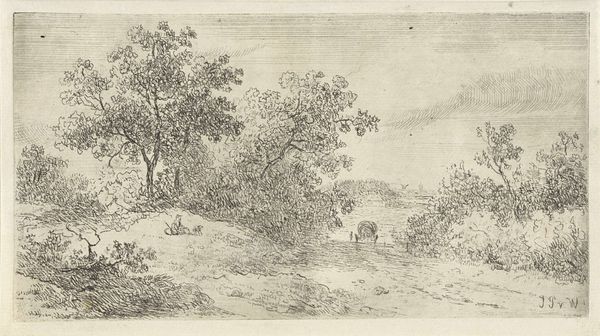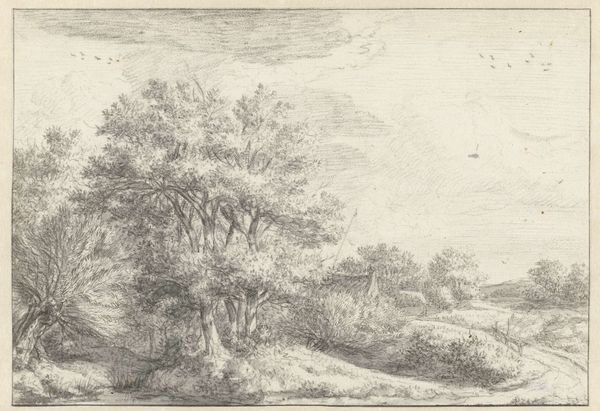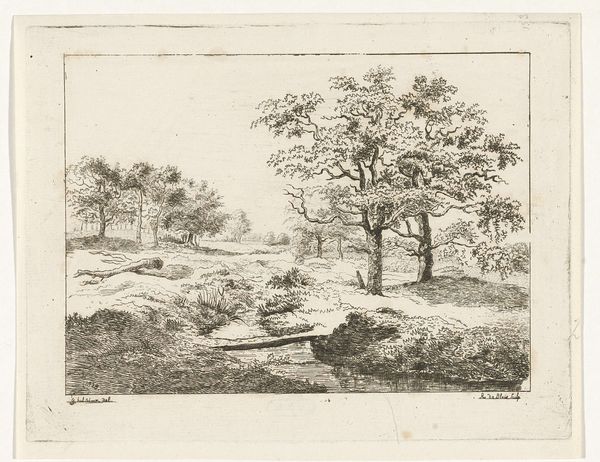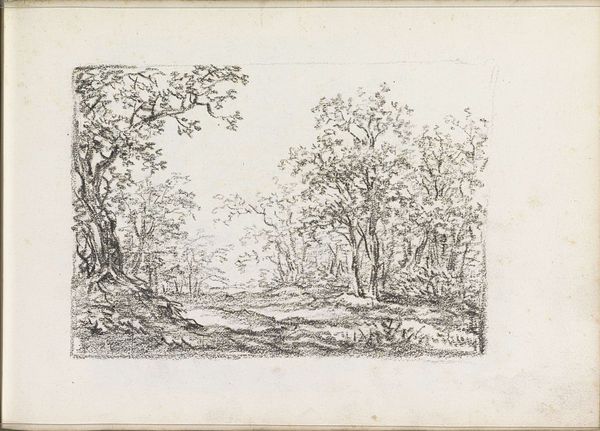
drawing, print, etching, intaglio
#
drawing
#
pen drawing
# print
#
etching
#
intaglio
#
landscape
#
etching
#
line
#
realism
Dimensions: height 79 mm, width 148 mm
Copyright: Rijks Museum: Open Domain
Johan Christiaan Willem Safft made this print, Two Resting Figures Beside a Forest Path, using etching techniques sometime in the late 18th or early 19th century. It presents a serene woodland scene, encapsulating the romanticism prevalent in Dutch art of that period. But it's also possible to interpret it as a commentary on the changing social landscape. The resting figures might represent the working class finding solace in nature, away from the industrialized urban centers. Dutch society was undergoing significant economic and social changes, and art often served as a means to reflect upon these transformations. The institutional history of art at this time reveals a growing interest in landscape painting, which was seen as a way to celebrate national identity and the beauty of the natural world. By delving into period literature, economic records, and the biographies of artists like Safft, we gain a richer understanding of the cultural values reflected in this seemingly simple artwork.
Comments
No comments
Be the first to comment and join the conversation on the ultimate creative platform.
